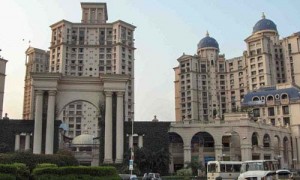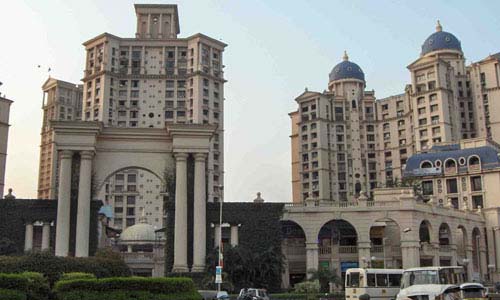 Track2Realty Exclusive: The critics of Mumbai property market for long blamed it for getting saturated with no new avenue of growth. The peninsular city no doubt has a limitation as far as expanding its boundaries are concerned, yet Mumbai is increasingly challenging its geographical limitations. The expansion of the city, not just vertically but horizontally of late, is enough to silence the critics.
Track2Realty Exclusive: The critics of Mumbai property market for long blamed it for getting saturated with no new avenue of growth. The peninsular city no doubt has a limitation as far as expanding its boundaries are concerned, yet Mumbai is increasingly challenging its geographical limitations. The expansion of the city, not just vertically but horizontally of late, is enough to silence the critics.
Instead of getting saturated the city property market is showing the way forward with the new growth corridors emerging and thus taking the city property market beyond the conventional CBDs like Nariman Point and around. A CBRE report says that with the government planning major infrastructure projects in the Mumbai Metropolitan Region (MMR), the area is emerging as a growth centre for real estate sector.
As per the CBRE report, there has been a significant increase in demand for commercial and residential properties in areas where major infrastructure projects are planned. “There has been a significant development in real estate along the Eastern Freeway. Housing prices in locations such as Chembur and Ghatkopar increased by around 28-30 per cent over the last two years,” says CBRE South Asia Co-head – Capital Markets India & Head West India, Nikhil Bhatia.
MMR consists of seven municipal corporations and fifteen municipal councils in the area extending upto Navi Mumbai on harbour line, Ulhasnagar on central line and Virar on western line. There are various catalysts for the new growth in these areas, like if Navi Mumbai Airport is biggest trigger for the realty growth in Navi Mumbai. Similarly on western line Virar area is getting better connectivity through improved local trains and metro extension and on the central line there are several developments lined up in Thane Ghodbunder Road, Kalyan and Ulhasnagar.
Industry observers hence maintain that the growth direction and the planning of the city are on the right track. It is rather felt that if infrastructure developments in the Mumbai Metropolitan Region are put on the fast track it will benefit the economy of the city in general and its real estate in particular. A number of new announcements for the region has hence been welcomed by all within the built environment.
Abhay Kumar, CMD of Grih Pravesh Buildteck agrees that the emergence of MMR region is gradually reducing the dependence on South Mumbai for economic activities. It cannot completely create a level playing field compared to Mumbai because of the unique linear geographical expanse of the MMR area. South Mumbai would remain the hub for stock market, banking and financial institutions but there is scope for other developments for residential and commercial activities.
“More development of MMR would add more zing to the entire region as there is scope of different developments in the wide expanse which would range from cargo yards in Navi Mumbai for JNPT and Navi Mumbai Airport or IT development in the Malad to Bhayander or residential development in Thane area. Overall development is slow but on the right track in the MMR and the government must plan & execute it in holistic way. South Mumbai is the most expensive location in India and most of the MMR area is out of reach for masses,” says Abhay.
Kishor Pate, CMD, Amit Enterprises Housing maintains that due to its unique geographical location, the growth of urban sprawl in the Mumbai Metropolitan Region has been very lopsided. Till the early ’70s, most of the MMR’s urban built-up area was concentrated in the Island city and its immediate suburbs, and expansion was largely limited to this region. Approximately three-fourth of MMR’s population was still concentrated in this region.
“With the rapid expansion of the road and rail networks beyond Greater Mumbai, growth was driven toward Vashi, Bhiwandi, Thane, Panvel and Kalyan. This trend has sustained over the years with land availability at a premium within the main city, and today even far-flung areas such as Khalapur, Uran and Karjat have yielded most of their agricultural and forest lands to real estate development,” says Pate.
Arvind Jain, Managing Director, Pride Group gives a historical perspective when he says that in a city like Mumbai, real estate expansion is bound to be anything but holistic. The original city was reclaimed from the sea by joining seven islands together. Right from when it was created to be a shipping and trading hub during British occupation, Mumbai’s naturally constrained borders attracted a degree of population that was clearly disproportionate to surrounding regions.
“The MMR was notified in 1967, in an effort to address the rising problems faced by inhabitants. More areas were also included in the region and today the MMR covers Greater Mumbai, Thane, Kalyan and Navi Mumbai, apart from several more towns and villages. Over the years, property price rises have been astronomical in the original core parts of Mumbai. The main city of Mumbai has seen prices rise by as much as 81% since the last of the pricing trough was seen in 2Q09. The growth in the Navi Mumbai and Thane region has been even greater. This is evident of the fact that with the city to grow in a viable manner, the development has extended in to the newer, outer regions,” says Jain.
While the MMR has very limited scope for unilateral growth, the population explosion in Mumbai has been tremendous. However, any explosion needs a sufficiently large fallout area. Analysts hence point out that the explosion of Mumbai’s population and consequent real estate development pattern can be likened to that of the firing of a bullet – its path is directed by the constraints of the barrel. In the years to come, the region is likely to see a steady thinning-out of the urban population in Mumbai’s central areas and increasing densification of these new growth areas. Meanwhile, the city’s wealthiest inhabitants continue to stay put within the rarefied spectrum of MMR’s ultra-expensive central areas. In this respect, the market is actually observing the accelerating process of social stratification that has, in fact, been underway in the city for a long time.
A holistic development is required to make MMR affordable for realty sector. Government must replan the zoning and allocation for different residential and commercial activities. Special Economic Zones can be a good initiative for fresh developments for realty sector and redefining the eco sensitive zones and coastal regulatory zones can help in overall growth. A large part of the dynamic nature of the residential sector growth has been on account of the increased supply in these corridors. Concurrently, there has been a pronounced population shift from the original MMR to these newly developed locations.
This trend will sustain over the next two decades, leading to a significant outward migration from the MMR. This is dynamic and is not only driven by the ever-rising property prices and escalating infrastructure deficit within the MMR but also by the fact that these new regions are attracting national and international manufacturing firms. Thanks to the resultant employment generation, many of MMR’s extended markets are emerging as stand-alone economic microcosms, with their own workplace hubs acting as local real estate demand generators.
However, the main city is now also striving to improve by adding infrastructure to keep pace with the steady influx of people. This has positive implications for Mumbai City’s primary influence zone and nearby areas. These infrastructure projects are acting as retention magnets for that part of the population whose economic lives are linked to the main business activities in the city, and who can afford the prices. But the expanding MMR is definitely challenging the saturation of Mumbai.





